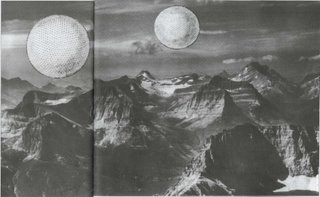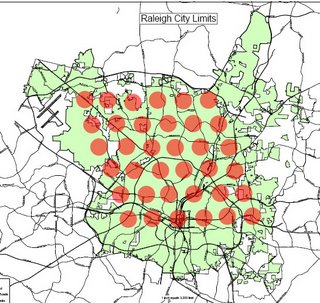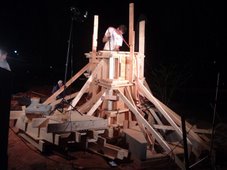Thursday, August 31, 2006
Wednesday's Post Studio Post
Today the studio tried a new means of communication. The entire studio entered a group chat to critique and gain insight from each other's posts. This again was a means of communication that I found had advantages and disadvantages. During directed conversation, we had some really interesting and fruitful discussion, the written log is also nice to go back and reference earlier comments; at times I felt like there was really good group conversation. The problems came it when several different ideas were tossed around at the same time, the conversation at times became jumbled and confusing. Also, if your work was being critiqued (or for Ron who was also being bombarded with questions and comments), it was hard to keep up with all the comments and I fear we may be at risk for Carpal Tunnel Syndrome. Overall, I feel that this could become an effective means of studio communication. This form of communication for a studio setting is of course new to all of us and so I think we still need to learn how to use the group chat effectively, like I said, there were times where I felt this was happening. The last thing I feel we need to look out for is verbal conversation amongst ourselves in the studio. Once or twice in the studio, there were conversations that didn't get completely delivered to Ron and this is also and issue which I feel is not a problem if the studio remembers to fill the professor in.
Wednesday, August 30, 2006
Cloud Nine
 nly one degree would function as a huge hot air balloon and could support several thousand people. In Fuller’s image shown on the left, he has suggested that such spheres could possibly float between mountains and be tethered to them. While each unit could act independently, Fuller also began to speculate how they could interact with each other and the world below; he suggests the use of photovoltaically powered aircraft (solar powered), an idea taken from Dr. Paul MacReady, as the primary means of transportation between these spheres.
nly one degree would function as a huge hot air balloon and could support several thousand people. In Fuller’s image shown on the left, he has suggested that such spheres could possibly float between mountains and be tethered to them. While each unit could act independently, Fuller also began to speculate how they could interact with each other and the world below; he suggests the use of photovoltaically powered aircraft (solar powered), an idea taken from Dr. Paul MacReady, as the primary means of transportation between these spheres. On a larger scale Fuller hoped that Cloud Nine spheres could create communities able to migrate according to changes in environment, population, culture, or any other varying conditions. Another important part of the vision is that Cloud Nine would offer a means for people to “converge and deploy around Earth without its depletion.”
Little follow up has been done on this particular vision of Fuller’s, but it is interesting to speculate on how a Cloud Nine city would function. If we assume that the average Cloud Nine structure supports 7,000 people, it would take between 35 and 36 spheres to  create a city of 250,000. A present day city of similar population is
create a city of 250,000. A present day city of similar population is
This first collage explores what a city of 36 Cloud Nine spheres might look like. Since each sphere is also meant to be a self supporting community it is interesting to picture such a city in landscape otherwise unused by humans. As mentioned, Fuller’s idea was that Cloud Nine would allow minimum disturbance to the natural environment below, it becomes interesting to note what a flock of these semi-permanent spheres would do to a landscape, for instance, the Cloud Nine city modeled below would create areas of constant shadow on the desert floor, a condition not natural to this location. Would the sphere cities also have other unperceived impacts on the environment surrounding the community?
the Cloud Nine city modeled below would create areas of constant shadow on the desert floor, a condition not natural to this location. Would the sphere cities also have other unperceived impacts on the environment surrounding the community?
Assuming that it would not be preferred for some spheres to occupy space below others, and that a certain spacing would be required between the spheres (for the purposes of allowing sunlight to enter each sphere properly), the map below predicts how the plan layout of a city of 250,000 inhabitants compares to the space covered by a typical city today of that size. The city of
Finally, Buckminster Fuller only briefly mentions that the Cloud Nine spheres could support “several thousand” inhabitants. How would the space of the sphere be divided to allow for communities of this size to inhabit the spaces efficently. The following sketches are my own speculation and experimentation based on some rough statistics.
Sketch to come